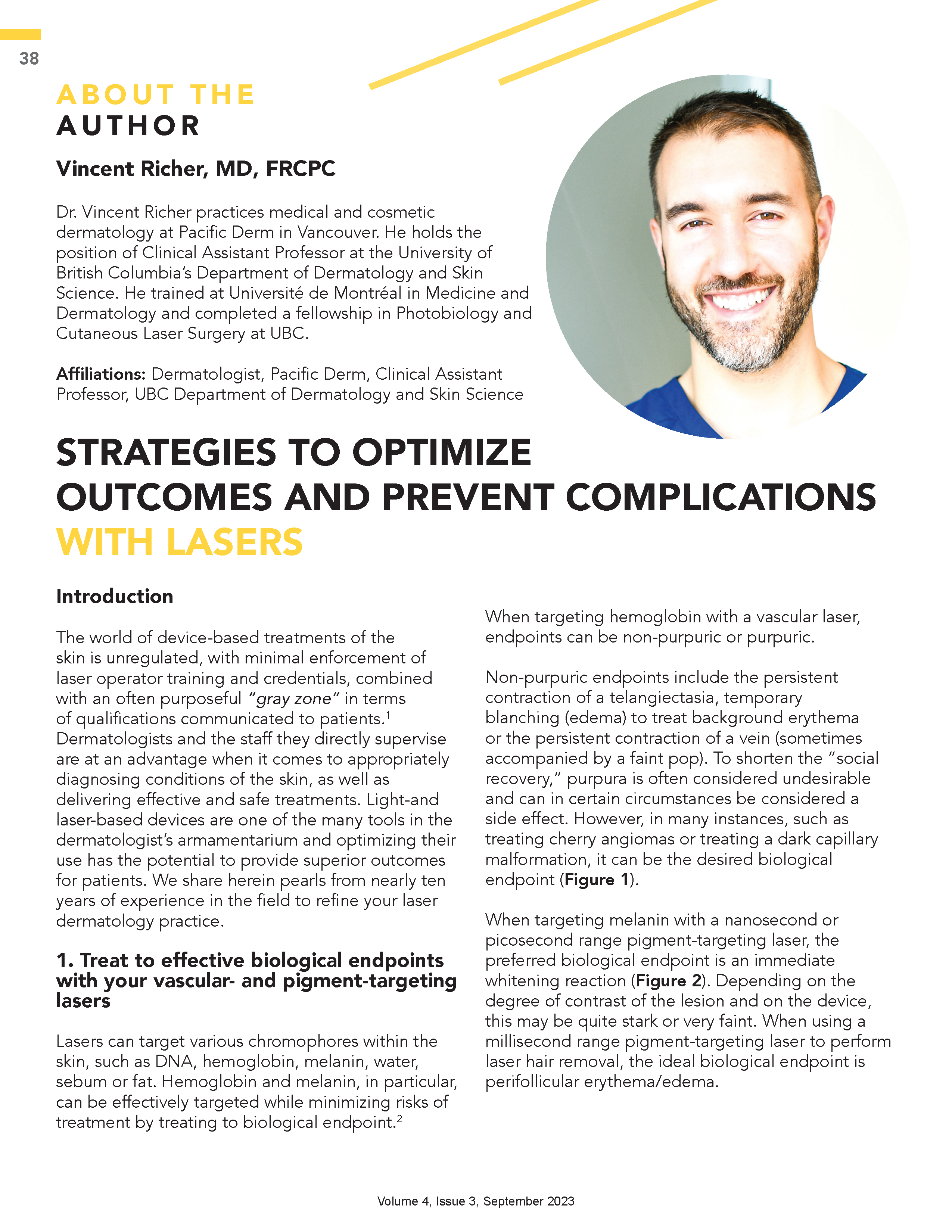Strategies to Optimize Outcomes and Prevent Complications with Lasers
Abstract
The world of device-based treatments of the skin is unregulated, with minimal enforcement of laser operator training and credentials, combined with an often purposeful “gray zone” in terms of qualifications communicated to patients. Dermatologists and the staff they directly supervise are at an advantage when it comes to appropriately diagnosing conditions of the skin, as well as delivering effective and safe treatments. Light- and laser-based devices are one of the many tools in the dermatologist’s armamentarium and optimizing their use has the potential to provide superior outcomes for patients. We share herein pearls from nearly ten years of experience in the field to refine your laser dermatology practice.
References
Rossi AM, Wilson B, Hibler BP, Drake LA. Nonphysician Practice of Cosmetic Dermatology. Dermatologic Surgery. 2019;45(4):588-597.
Wanner M, Sakamoto FH, Avram MM, et al. Immediate skin responses to laser and light treatments: Therapeutic endpoints: How to obtain efficacy. J Am Acad Dermatol. 2016;74(5):821-833.
Wanner M, Sakamoto FH, Avram MM, Anderson RR. Immediate skin responses to laser and light treatments: Warning endpoints: How to avoid side effects. J Am Acad Dermatol. 2016;74(5):807-819.
Glover C, Richer V. Does Topical Anesthesia Alter the Outcomes of Vascular Laser Procedures? Review of Vasodynamic Effects and Clinical Outcomes Data. Dermatol Surg. 2023 Mar 1;49(3):266-271.
Flegel L, Kherani F, Richer V. Review of Eye Injuries Associated With Dermatologic Laser Treatment. Dermatol Surg. 2022;48(5):545-550.
Waldman A, Bolotin D, Arndt KA, et al. ASDS Guidelines Task Force. Dermatol Surg. 2017;43(10):1249-1262.
Gurel MS, Aral BB. Effectiveness of erbium:YAG laser and cryosurgery in seborrheic keratoses: Randomized, prospective intraindividual comparison study. J Dermatolog Treat. 2015 Oct;26(5):477-80.
Tran M, Richer V. Elective Treatment of Dermatosis Papulosa Nigra: A Review of Treatment Modalities. Skin Therapy. 2020;25(4):1-5.
Benson TA, Hibler BP, Kotliar D, Avram M. Nonablative Fractional Laser Treatment Is Associated With a Decreased Risk of Subsequent Facial Keratinocyte Carcinoma Development. Dermatol Surg. 2023 Feb 1;49(2):149-154.
Tai F, Shah MR, Pon K, Alavi A. Laser Resurfacing Monotherapy for the Treatment of Actinic Keratosis. J Cutan Med Surg. 2021;25(6):120347542110275-120347542110275.


